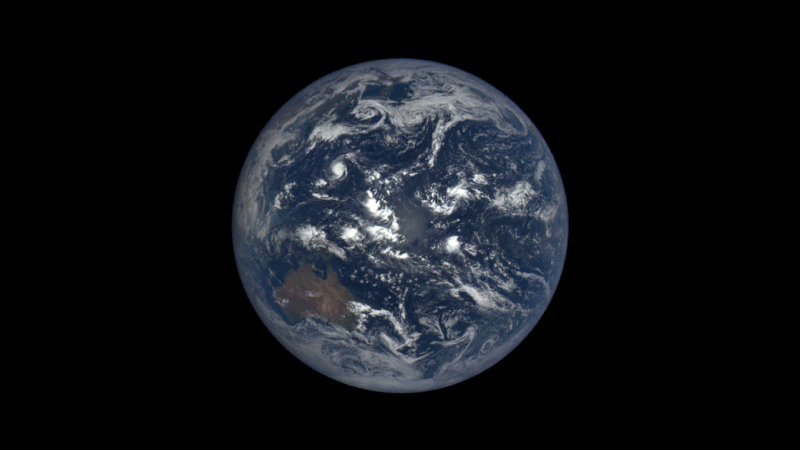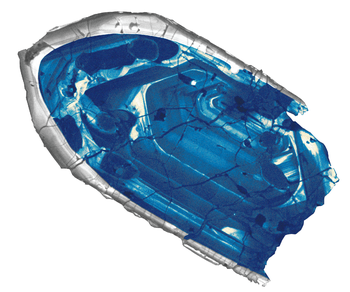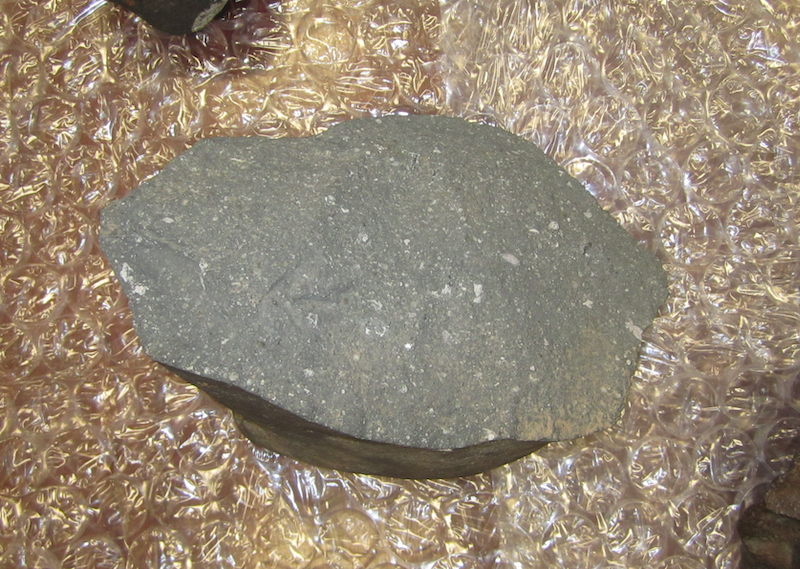
Humans have likely pondered the question of the age of the Earth since we first developed a sense of time. The best scientific research to date suggests that our planet formed about 4.54 billion years ago. That’s 4,540,000,000 years!
Researchers studied the most ancient rocks samples, not just from Earth but also from the moon, as well as meteorites formed in the early solar system. All that data, taken together, is how they determined Earth’s age.
The puzzle of Earth’s age
Earth hides its age well. Today, most of the crust is younger than the planet, having been modified over Earth’s history, to some degree, by plate tectonics and erosion.
At subduction zones along continental margins, oceanic crust is pulled into the mantle and melted. Meanwhile, new crust forms at mid-ocean ridges and hotspots. Tectonic plates push against each other, creating mountains. Streams and rivers carry weathered rocks to lowlands and the ocean, depositing stones, mud, and sand along the way. Over geologic time, accumulated sediment can become compressed to form rock or pulled into the mantle to be recycled.
Looking at moon rocks to determine the age of Earth
Pristine unaltered rock formations may be impossible to find, but there are still very rare ancient rocks to be found. Zircon crystals from Jack Hills in Western Australia, aged at 4.404 billion years, currently hold the record for the oldest mineral on Earth. In northwest Canada’s Acasta River, some rock samples are as old as 4.031 billion years.

A lunar rock, brought back by Apollo 14 astronauts, had a fragment from our planet embedded in it. Scientists think that an asteroid or comet impact violently flung pieces of Earth’s crust into space, and at least one piece landed on the moon. Studies found that fragment to be about 4 billion years old.

Since ancient terrestrial rocks are not likely to be leftovers of our planet’s original crust, scientists needed to also look at old materials elsewhere in the solar system that had not undergone much change like the rocks on Earth.
The moon’s surface, despite a history of volcanic activity and meteorite bombardments, has a better chance of preserving crust dating to its creation. A study, published in 2019, of rocks brought back by the Apollo missions, suggests that the moon formed about 4.51 billion years ago, about 50 million years after the solar system’s formation (4.56 billion years ago).
Looking at meteorites
Scientists also looked at remnants from the early solar system: meteorites with calcium-aluminum-rich inclusions that were among the first solid bodies to coalesce as planets began forming around the young sun. They’ve been dated to 4.567 billion years.

How do scientists determine a rock’s age?
Scientists age rocks using a technique called radiometric dating. Some elements in rocks are radioactive, and that scientists use that property as a clock that determines their age. In very large numbers, 50% of radioactive atoms will decay from one form to another within a certain period of time. That time interval is called the half-life.
For instance, U-235 is a radioactive isotope of uranium. Through a series of decay steps, it breaks down to a stable form of lead known as Pb-207. In chemistry jargon, U-235 is called the parent isotope and Pb-207 is the daughter isotope.
In order to date the rock, scientists measure the relative quantities of parent and daughter isotopes in their sample. From prior studies, they already know that the half-life of U-235 – the amount of time it takes for 50% of U-235 to convert to Pb-207 – is 704 million years. Therefore, if the rock sample has 50% each of U-235 and Pb-207, that rock is 704 million years old. If the sample has 25% U-235 and 75% Pb-207, the sample is 1,408 million years old.
Another parent uranium isotope, U-238 decays to another lead isotope known as Pb-206, with a half-life of 4.47 billion years. Scientists use both uranium isotopes in their analyses of a sample because the result cross-check each other. Analyses of the ratios of U-235 to Pb-207 and U-238 to Pb-206 in a sample will produce the same results for its age.
A mineral called zircon often contains U-235 and U-238. However, lead cannot be incorporated into the crystal lattice. Therefore, if lead is found in zircon, it only got there because it decayed from the uranium isotopes. This prison-like property of zircon makes it an ideal mineral for use in dating rocks.
Brief history of the search for the age of Earth
Getting to the point of knowing Earth’s age at such astonishing precision has been a long scientific journey.
Physicist William Thomson, also known as Lord Kelvin, concluded, in 1862, that Earth was between 20 to 400 million years old, based on calculations of how long it took to cool from a molten state. There was a lot of controversy surround it, as scientists also started taking into consideration the new science of evolution.
The history of radiometric dating began around the early 20th century as scientists were learning more about radioactivity. Physicist Earnest Rutherford, with colleagues, was the first to attempt measurements on a rock sample in 1904. Additional discoveries on radioactivity further refined efforts at measurements. In 1921, Arthur Holmes showed that radiometric dating was a valid method for aging rocks, and suggested that the Earth was a few billion years old. Since the 1960s, radiometric dating has become the dominant way to measure the age of rocks.

Bottom line: Scientists derived the age of Earth, 4.54 billion years, largely from studying the oldest rocks on our planet and meteorites formed early in the solar system’s history. The determined ages for rocks using radiometric dating.











